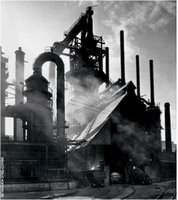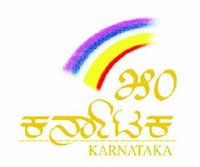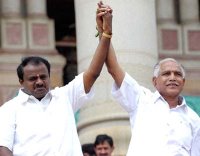Bengaluru-ed
There is more change for Americans who weathered the storms that turned industrial  heartlands into Rust Belts. With a “can do” attitude, those Americans re-trained for the Information Age, only to see those
heartlands into Rust Belts. With a “can do” attitude, those Americans re-trained for the Information Age, only to see those  high tech jobs shipped offshore to
high tech jobs shipped offshore to
With a mixture of state pride, adroit political exploitation, language chauvinism and impeccable timing, effective November 1, 2006 the process to rename Bangalore Bengaluru began. There are several forces that provided the impetus for the renaming of the globally- branded
 Changing names used by the former British overlords has been in motion in
Changing names used by the former British overlords has been in motion in
Bengaluru is the Kannada pronunciation of the city name. An enjoyable and often repeated myth about the original naming of city dates to the 1300’s. The legend recounts that Hoysala King Vira Ballala became lost while on hunting trip. He found refuge in the hut of an old woman. The old woman offered the king cooked beans to sate his hunger. In his gratitude, the king named the location Benda Kaal Ooru (Town of
Regardless of origins, the British, full of their own beans, renamed the city
 There is much to be said and admired about national and language pride. Southern Indian states are divided along language groups. Politicians give serious consideration to the state of the state language. Swept into office six months ago on a bold re-alignment of power, Kuramaswamy’s coalition government is keenly aware of the political significance of the renaming. Announcing the name changes before a crowd of 35,000 Kannadiga celebrants in Chinnaswamy Stadium was political drama Carl Rove wishes he could again command.
There is much to be said and admired about national and language pride. Southern Indian states are divided along language groups. Politicians give serious consideration to the state of the state language. Swept into office six months ago on a bold re-alignment of power, Kuramaswamy’s coalition government is keenly aware of the political significance of the renaming. Announcing the name changes before a crowd of 35,000 Kannadiga celebrants in Chinnaswamy Stadium was political drama Carl Rove wishes he could again command.
 Ironically, due to the enormous influx of out-of-state Indians and expats to
Ironically, due to the enormous influx of out-of-state Indians and expats to
Labels: Bengaluru'ed

1 Comments:
It is nice to know an American perspective of Bengalooru. Being a Kannadiga and a former Bengaloorean all I can say is that Bengalooru will remain close to my heart.
Hope you have a good Bengalooru and cherish evry moment of your stay.
-Arun M
Post a Comment
<< Home